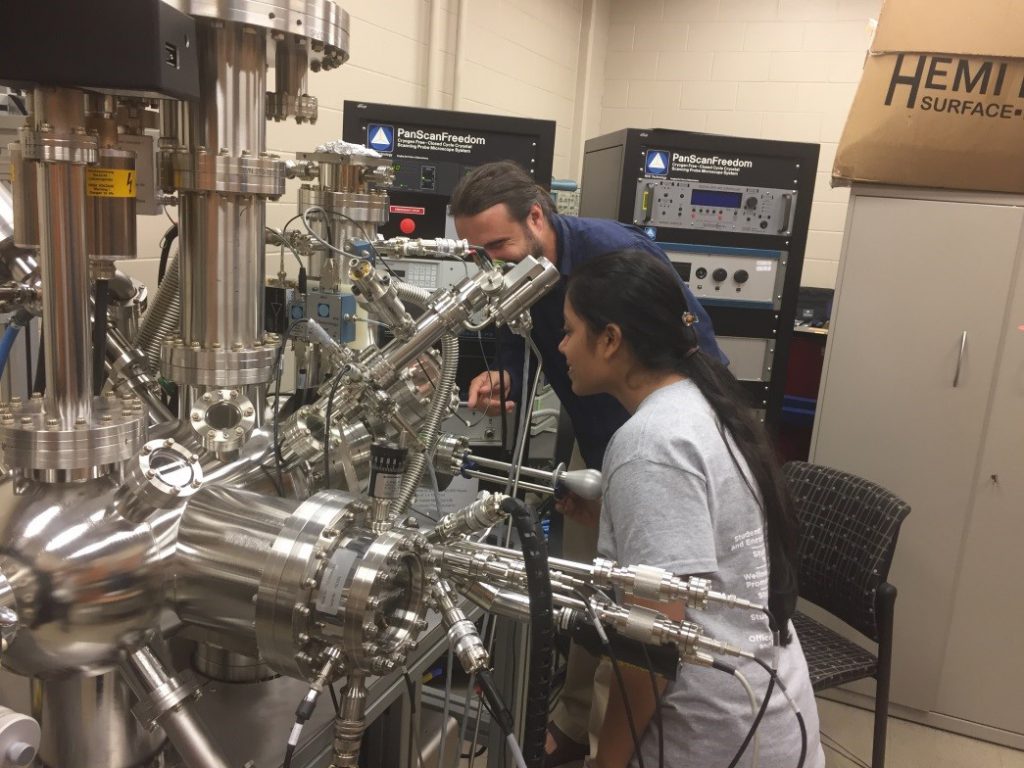The results may help future missions land on and sample asteroids.
BY SIMONE ROUSSEAU | JULY 14, 2020

UCF planetary scientist Adrienne Dove and a team of students have teamed up with NASA’s Johnson Space Center to examine data on an asteroid experiment years in the making.
The work is funded by a recently announced $200,000 grant from NASA’s Physical Sciences Research Program. Dove’s research group is one of only five recipients to receive funding from the program.
While scientists have observed the surfaces of asteroids from afar, few missions have landed on asteroids to conduct research. Additionally, few research projects have aimed at figuring out how and why certain materials, such as pebbles and rocks, rise to the surface of asteroids while smaller particles remain underneath. For the past five years, Dove’s team has conducted experiments using regolith simulants, or material meant to mimic these layers of asteroids.
The data to be analyzed comes from the International Space Station, where the regolith-containing Strata-1 experiments were performed on a rack in the ISS from 2016 to 2017. Strata-1 was remotely monitored from earth by a team at the Johnson Space Center in Houston.
Several experiments have since followed this original research, and in these the regolith (broken up bits of rocks and dust) was poked and prodded by spacecraft tools and monitored in reaction to microgravity and low-gravity environment. One is still running on the ISS. Understanding how the surface and layers of asteroids respond to these experiments could have a big impact on the future of asteroid missions.
A deeper understanding of asteroid surfaces will contribute to missions in which Dove hopes that humans and robots can safely land on or interact with their surfaces.
“Scientists, and now companies, are heavily interested in exploring asteroids,” Dove says. “But it is important to understand the way we should interact with their surfaces.”
“Former UCF students helped design Strata and earlier experiments and now new students will have the opportunity to conduct data analysis of the regolith experiments, which is a very important part of the science process,” Dove says.
In the process of analysis, students will use the time-lapse image data provided by Strata-1 to find patterns in the particle motion of the regolith stimulant. Data analysis is conducted with the hopes of making predictions based on acceleration behavior.
“I am excited to tackle the challenging portions of the data,” she says. “Once we learn more from this, we can use that to develop future experiments as well.”
Dove received her doctorate in Astrophysical and Planetary Sciences from the University of Colorado at Boulder and her bachelor’s degree in Physics and Astronomy from the University of Missouri. She joined UCF in 2012.


